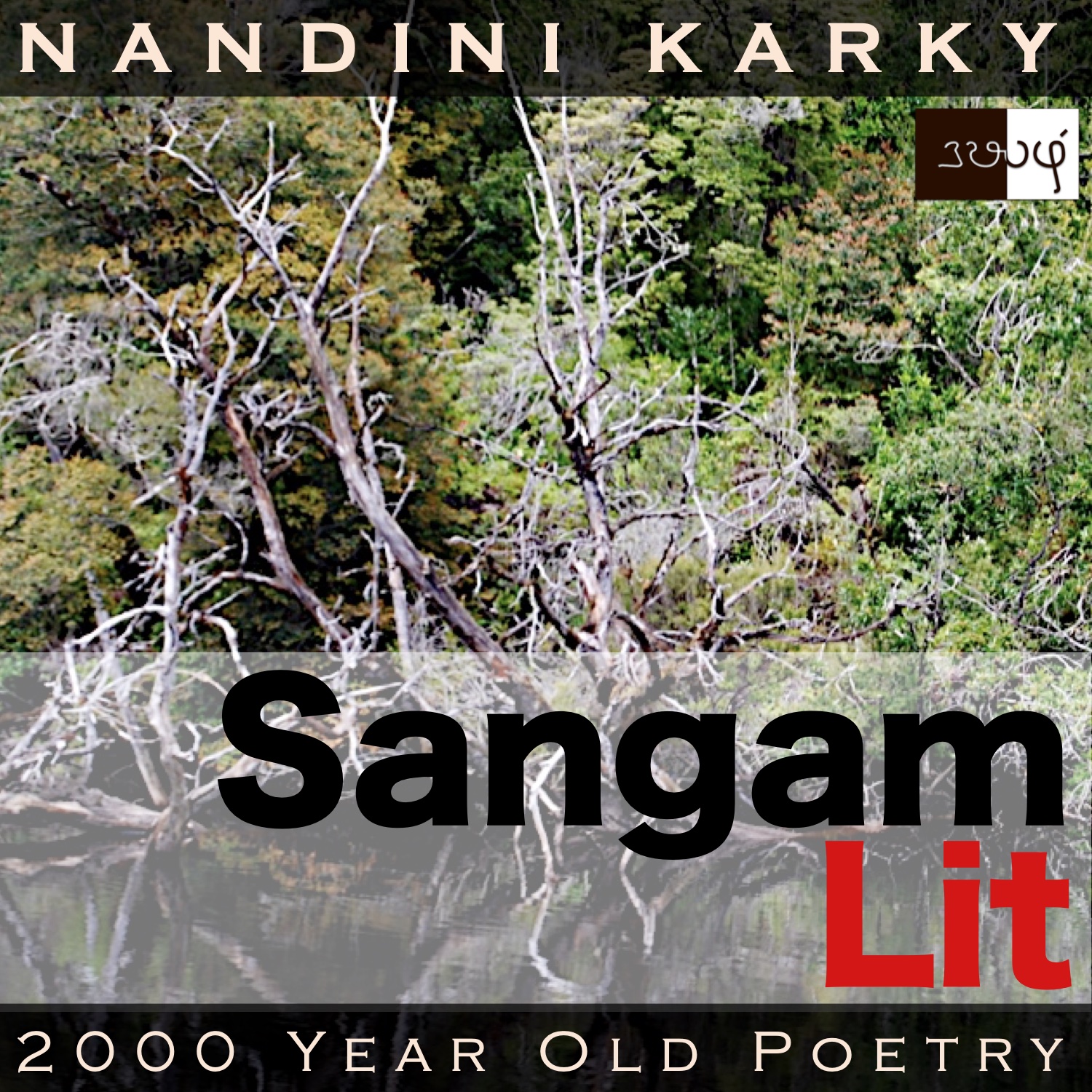Podcast: Play in new window | Download
Subscribe: Apple Podcasts | Spotify | Amazon Music | Android | iHeartRadio | TuneIn | RSS | More

In this episode, we understand the life and love depicted in Sangam Literary work, Natrinai 59, written by the prolific Sangam poet, Kabilar. Set in the forest regions of ‘Mullai’, the poem speaks in the voice of the man to his charioteer, urging him to hurry homeward.
உடும்பு கொலீஇ, வரி நுணல் அகழ்ந்து,
நெடுங் கோட்டுப் புற்றத்து ஈயல் கெண்டி,
எல்லு முயல் எறிந்த வேட்டுவன் சுவல
பல்வேறு பண்டத் தொடை மறந்து, இல்லத்து,
இரு மடைக் கள்ளின் இன் களி செருக்கும்
வன் புலக் காட்டு நாட்டதுவே-அன்பு கலந்து
நம்வயின் புரிந்த கொள்கையொடு, நெஞ்சத்து
உள்ளினள் உறைவோள் ஊரே; முல்லை
நுண் முகை அவிழ்ந்த புறவின்
பொறை தலை மணந்தன்று; உயவுமார் இனியே.
A procession from the animal world greets us as we step into the poem. First in line is the ‘உடும்பு’ or ‘monitor lizard’, followed by ‘நுணல்’ or ‘frog’ and ‘ஈயல்’ or ‘termites’ and finishing last, not so unusually, is the ‘முயல்’ or ‘hare’! Seeing all these animals in close association with ‘வேட்டுவன்’ or ‘hunter’, we understand it’s the portrait of a jungle hunt. Shortly thereafter, we glimpse at the intoxication of ‘கள்’ or ‘palm toddy’ and inhale the fragrance of ‘முல்லை’ or ‘wild jasmine’. Beautiful are the female descriptors found in Sangam poetry and here, a case in point: ‘நெஞ்சத்து உள்ளினள்’ meaning ‘she who dwells on me in her heart’. Taking a cue, let’s step into the heart of the poem.
As we have seen in other ‘Mullai’ or ‘forest land’ poems, the man has left the lady to complete a task and having finished that task to his satisfaction, his heart turns in the direction of his lady, who’s waiting for him. With these thoughts, he turns to his charioteer and tells him, “In the forest, during the day, the hunter kills wild lizards, sets aside frogs with lined skin, digs out termites from tall termite hills and hunts down resting rabbits. He then ties them all in a bundle and carries them home on his shoulders. Arriving at his hut, he discards his bundle of delicacies and dashes to drink the palm toddy excessively. Thereafter, he lies about in an intoxicated state. It’s in such a wild forest country, that my lady resides. My lady, the one who is filled with love for me and whose heart endlessly thinks only of me. It’s that season when the ‘mullai’ flowers in the forest are opening out their fine buds. This far, she has been waiting patiently but she will be distressed if there’s any further delay!” With these words, the man urges his charioteer to take him to her speedily.
In a poem dwelling on the inner life of a man and a woman, we find these fascinating references to elements of outer life, for instance, food. From the actions of our hunter, we get a tiny glimpse of what people in Sangam times ate and what they avoided. In the forest country, they seem to have fed on the flesh of monitor lizards, hares as well as surprisingly, termites! Reading more on this, I find that termites are enjoyed as food even today in many developing countries especially in Africa. Where malnutrition is rampant, these termites provide a food source, rich in protein and fat apparently. I see this reference in Sangam literature to termites as food as a possible literary link to the roots of all humanity in Africa. A little more digging on the termites showed that these insects used to be cooked with rice and consumed as an ancient version of today’s ‘biryani’ as well as made into tangy, tamarind curries. While the ancients depicted seemed to have had no qualms about eating termites, from this verse, we see that they avoided frogs. While frogs are a delicacy in countries in France and China, I wondered why the Tamils avoided it and came to the conclusion that there was a high probability of these frogs being of a poisonous variety, living in such tropical jungles. Hence, with their knowledge of the natural world, these forest-dwelling ancients might have avoided them as food. Moving on from food, we observe this hunter, after a day’s hard work, gathering such a delicious variety of edibles, coming home only to throw all of it in a corner and seek the intoxication of toddy. Such a precise metaphor for the man, who has parted in search of wealth and having completed all that he set out to do, intends to throw it all away from the centre of his heart and rush to the hands of his patiently waiting lady.
Seeing the blooming wild jasmine flowers, the man perceives that the rainy season or ‘கார்காலம்’ has arrived. He recollects having told his lady that he will be back by then. So, pointing to the blooming flowers, he tells his charioteer, this far she would have waited patiently, but any more delay, she would worry, no end. So hurry, my man, he orders! Thus, using the elements in the natural world, these few lines of verse, unravel the inner universe of the man and woman, revealing before our eyes, her patient, undying love and his yearning to be one with her!




ஆழ்ந்த நல்லதோர் சுவைக்கத்தக்க விளக்கம் .